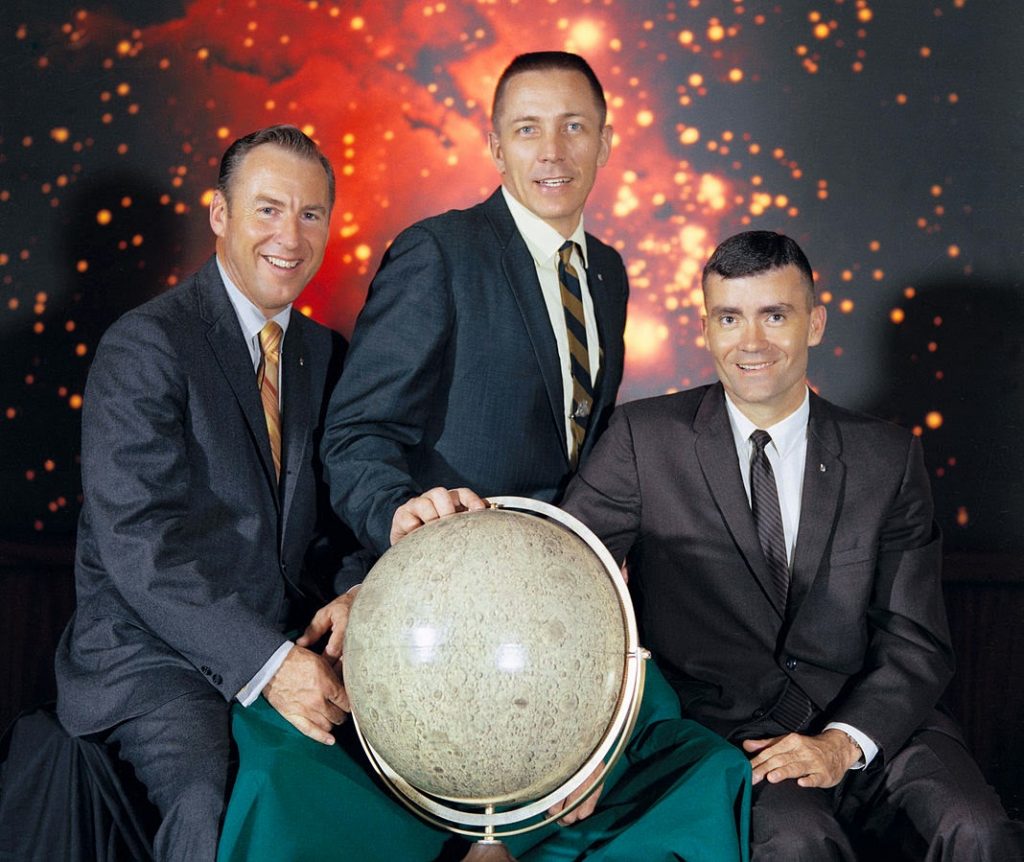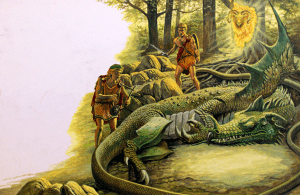The Apollo 13 lunar expedition suddenly turned into a survival mission when an explosion risked the lives of the crew, but turned out to be a successful failure. Before we examine the remarkable success accomplished by NASA, let’s travel back to the beginning of the mission. The main objective of Apollo 13 was to performed a lunar expedition. However, the crew encountered unexpected outcomes throughout the trip. The adventure of Apollo 13 lasted 143 hours and began on April 11, 1970, in Cape Kennedy, Florida. At 2:13 p.m., Apollo 13 was heading to the moon and its respective mission, when it experienced an explosion, then malfunctions, and subsequently doubts of ever making it back home alive.

During the first two days of the mission, the crew ran into minor surprises. But everything was looking as if Apollo 13 was the smoothest flight of NASA’s so far. A message came by Joe Kerwin, the capsule communicator, after 46 hours and 43 minutes, saying, “The spacecraft is in real good shape as far as we are concerned. We’re bored to tears down here.” That would be the last time somebody mentioned the word bored for a long time.1
At 55 hours and 46 minutes the crew finished a TV broadcast on how comfortable they were and that everything was fine in space. Nine minutes after the TV broadcast, a massive explosion occurred inside the spacecraft, causing a loss of electricity, light, and water. After the explosion, Apollo 13 was about 200,000 miles from Earth. The message was transmitted to Earth at 9:08 p.m., April 13, with the famous phrase, “Houston, we’ve had a problem.” James Lovell, the commander, told the ground that the main breaker was undervolted.2
The explosion left the crew in very bad shape, as they lost two of three fuel cells, which were the spacecraft’s prime source of electricity. Thirteen minutes after the explosion, Lovell saw through the window the final evidence of the catastrophe. “We are venting something out into the … into space,” Lovell reported to Houston. As Capcom Jack Lousma replied, “Roger, we copy you venting.” Lovell said, “It’s a gas of some sort.” The substance venting out was oxygen gas escaping at a high rate from the second and last oxygen tanks.3
An hour after the explosion, mission control sent a message, “we are now looking toward an alternative mission, swinging around the Moon and using the lunar module power systems because of the situation that has developed here this evening.” The crew was instructed to move to the lunar module, which would now be used as a lifeboat, and turn off completely the command module for re-entry. Meanwhile, the damaged Apollo 13 swung around the moon. The idea of landing on the moon was no longer an option for NASA. It was now a rescue mission.4
The crew and ground control were confronted with two problems to solve. First, getting the spacecraft and crew on the fastest route back home. Second, conserving consumables, power, oxygen, and water. The conservation of consumables began by shutting down the command module, which was only used as a bedroom. They also turned down all the systems in the lunar module, except for those required as life support, communication, and environmental control. For the first issue, after a great dealing of calculations and simulations at the Mission Control on Earth, they concluded that the Lunar Module’s engines could handle the requirements. Thus, the engines were fired to boost their speed another 860 fps, cutting the flight time by 10 hours.5

Finally, Apollo 13 rounded the Moon and began its journey back home. However, the problems were not entirely eradicated. The re-entry procedure required two more corrections. One was to align the spacecraft more towards the re-entry route. Moreover, the second issue was to fine tune the angle of entry, which had to be between the narrow range of 5.5 and 7.5 degrees. As the shuttle lacked power, the crew was forced to determine the altitude of the spacecraft manually. Normally the procedure would be routine; however, they experienced difficulties during the process, because the explosion had caused them to be surrounded with debris. Subsequently, they could not observe star sights, so the altitude of the shuttle became challenging to estimate. Mission control gave the answer to use the same strategy Apollo 8 used, in which the sun would be used as the alignment star.6
Just short of four hours before re-entry, Apollo 13 ejected the damaged Service Module. As the Service Module move away, Apollo 13 was able to see the damage. Two and a half hours before re-entry, Apollo 13 brought the command module back to life. As the system turned on, everyone aboard and at Mission Control, and around the world, had a sigh of relief. An hour later, the Lunar Module was also ejected. Mission control send a message, “Farewell, Aquarius, and we thank you.”6
The Apollo 13 Command Module carrying Jim Lovell, Fred Haise, and Jack Swigert, touch the Pacific Ocean on April 17, 1970 at 1:07 p.m. EST. Forty-five minutes later, USS Iwo Jima, recovery ship, came and brought the crew aboard. After 142 hours 54 minutes 41 seconds, Apollo 13 returned to Earth. The survival mission ended up being a successful failure, as nobody died and all came back to Earth alive from an almost impossible mission 200,000 miles from home.
- Office of Public Affairs, National Aeronautics and Space Administration, Apollo 13: “Houston we’ve got a problem,” Washington: Library Catalog, 1970. ↵
- Encyclopedia Britannica, s.v. “Apollo 13”, last modified September 7, 2017, https://www.britannica.com ↵
- Michael S. Rosenwald, “’Houston, we have a problem’: The amazing history of the iconic Apollo 13 misquote,” The Washington Post, April 2017, https://www.washingtonpost.com. ↵
- Nick Greene, “Apollo 13: A Mission in Trouble,” ThoughtCo., (2017). https://www.thoughtco.com. ↵
- Encyclopedia Britannica, s.v. “Apollo 13”, last modified September 7, 2017 https://www.britannica.com . ↵
- Nick Greene, “Apollo 13: A Mission in Trouble,” ThoughtCo., (2017). https://www.thoughtco.com. ↵
- Nick Greene, “Apollo 13: A Mission in Trouble,” ThoughtCo., (2017). https://www.thoughtco.com. ↵



65 comments
Kenneth Gilley
What an interesting article! The Apollo 13 mission was so close to being a complete disaster. It is amazing that the crew members ever made it back alive. What is as incredible as anything is the fact that the scientists and engineers back at NASA were able to perform all of the calculations needed to safely get Apollo 13 back to earth safely on such short notice.
Alexander Avina
I really enjoyed reading about his extraordinary group of individuals. It is always interesting to read about space exploration and the behind the scenes activity that makes it possible. I definitely learned a lot more about what goes into making these missions possible and the risks that come along with the territory. This article was definitely an interesting read that kept me intrigued all the way through its entirety.
Priscilla Reyes
Great article! Although, being that I just watched a conspiracy theory film on the landing on the moon, I read this article skeptically because I find it interesting and heartbreaking that the U.S. would fake this event. From this story, I wonder why the astronauts would prepare with such little fuel cells and how it was so unfortunate that they lose oxygen tanks. Nevertheless, if we did land on the moon, it is an amazing thing and it is thanks to people like the three mentioned here who were willing and able to volunteer.
Danielle Slaughter
There are two final frontiers I would never visit even if I was offered a million dollars, even though I love both of them – the deepest trenches of the sea, and the edge of Earth’s atmosphere and beyond. To be locked in a tin can, where anything can go wrong and you have a significant chance of dying a horrible death, is terrifying to me. That is why I have nothing but respect for astronauts like Lovell, Haise, and Swigert. They risked their lives in the name of exploration, and although they failed in their original mission, the fact that they made it back alive from space is a testament to their courage.
Lyzette Flores
To be heading up to space, being so far from home, and then for the spaceship to be malfunctioning must of been so terrifying. I can’t imagine what Jim Lovell, Fred Haise, and Jack Swigert were feeling in those moments. They must have bee disappointed because they wanted to land on the moon but it was not safe. I am glad however that at the end they were able to return back home safe and sound.
Lilliana Canales
I’ve heard that phrase for as long as I can remember but never knew the story behind it. Space is fascinating, but also terrifying because what do humans know of a place they’re not from? It’s truly horrific that air got into the spacecraft and one can only imagine the terrible thoughts and feelings the pilot and the crew members were experiencing. It’s a relief to hear that the crew made it safely back to earth because that wasn’t always the case.
Katherine Watson
Just thought of being 200,000 miles away from Earth is scary already, to begin with, but when you mix that with life-threatening malfunctions, everything changes. For them to make it home safely in one piece despite the limited power, loss of heat to keep them warm and the need to make repairs to the machines that would help keep them alive and breathing is just a miracle all in itself. I know their initial goal was to make it to the moon, but all that matters is that the crew made it back as safely as possible. I also didn’t know that the phrase “Houston, we have a problem” arisen from this situation, so you learn something new every day.
Christopher Hohman
Nice article. I have heard of Apollo thirteen. Wow how scary that must have been for those men to be trapped up there in space. I really am glad that all three men made it home safely, it could have been a compete disaster. I cannot imagine the terror these men must have felt, being that they were 200,000 miles from home and if one calculation was off they may have never seen their families again. Am I correct in saying this was their last mission? Maybe not although I think so. I have also seen the movie with tom hanks. Its a good movie
Hailey Rodriguez
Before reading this article, I had heard of Apollo 13 before, however, I did not know the extremity of this mission and rescue. I can’t possibly imagine how scared the crew members must have been after the explosion with a shortage of water, food, and oxygen. Those 142+ must have been the worst days of those astronauts lives. I can’t imagine how on edge everyone at mission control and the loved ones on Earth was. It is truly a miracle that this crew was able to get back home without too many complications or injuries.
Didier Cadena
I was not that familiar with the story of Apollo 13, so it was interesting to read a little bit about it. I very much enjoyed the way that you displayed the suspense of the story. The article does a great job of describing the events that took place and still the make the story interesting enough o continue reading.